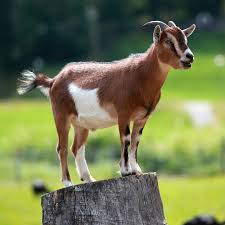Stamp: Boer Goat (Capra aegagrus hircus) (Cayman Islands 2017)
Boer Goat (Capra aegagrus hircus) (Cayman Islands 2017)
01 March (Cayman Islands ) within release 50 Years of organized Agriculture goes into circulation Stamp Boer Goat (Capra aegagrus hircus) face value 20 Cayman Islands cent
| Stamp Boer Goat (Capra aegagrus hircus) in catalogues | |
|---|---|
| Michel: | Mi: KY 1296 |
Stamp is square format.
Also in the issue 50 Years of organized Agriculture:
- Stamp - Fruits and Vegetables face value 25;
- Stamp - Boer Goat (Capra aegagrus hircus) face value 20;
- Stamp - Mixed Breed Cattle (Bos primigenius taurus) face value 50;
- Stamp - Peppers face value 2;
|
Data entry completed
46%
|
|
|---|---|
| Stamp Boer Goat (Capra aegagrus hircus) in digits | |
| Country: | Cayman Islands |
| Date: | 2017-03-01 |
| Emission: | Commemorative |
| Format: | Stamp |
| Face Value: | 20 Cayman Islands cent |
Stamp Boer Goat (Capra aegagrus hircus) it reflects the thematic directions:
Agriculture is the cultivation and breeding of animals, plants and fungi for food, fiber, biofuel, medicinal plants and other products used to sustain and enhance human life.[1] Agriculture was the key development in the rise of sedentary human civilization, whereby farming of domesticated species created food surpluses that nurtured the development of civilization. The study of agriculture is known as agricultural science. The history of agriculture dates back thousands of years, and its development has been driven and defined by greatly different climates, cultures, and technologies. Industrial agriculture based on large-scale monoculture farming has become the dominant agricultural methodology.
Animals are multicellular, eukaryotic organisms of the kingdom Animalia (also called Metazoa). All animals are motile, meaning they can move spontaneously and independently, at some point in their lives. Their body plan eventually becomes fixed as they develop, although some undergo a process of metamorphosis later on in their lives. All animals are heterotrophs: they must ingest other organisms or their products for sustenance.
The goat or domestic goat (Capra hircus) is a species of domesticated goat-antelope that is mostly kept as livestock. It was domesticated from the bezoar ibex (C. aegagrus aegagrus) of Southwest Asia and Eastern Europe. The goat is a member of the family Bovidae, meaning it is closely related to the sheep. There are over 300 distinct breeds of goat. It is one of the oldest domesticated species of animal - according to archaeological evidence its earliest domestication occurred in Iran at 10,000 calibrated calendar years ago
Mammals are any vertebrates within the class Mammalia (/məˈmeɪli.ə/ from Latin mamma "breast"), a clade of endothermic amniotes distinguished from reptiles (including birds) by the possession of a neocortex (a region of the brain), hair, three middle ear bones and mammary glands. All female mammals nurse their young with milk, secreted from the mammary glands. Mammals include the largest animals on the planet, the great whales. The basic body type is a terrestrial quadruped, but some mammals are adapted for life at sea, in the air, in trees, underground or on two legs. The largest group of mammals, the placentals, have a placenta, which enables the feeding of the fetus during gestation. Mammals range in size from the 30–40 mm (1.2–1.6 in) bumblebee bat to the 30-meter (98 ft) blue whale. With the exception of the five species of monotreme (egg-laying mammals), all modern mammals give birth to live young. Most mammals, including the six most species-rich orders, belong to the placental group. The largest orders are the rodents, bats and Soricomorpha (shrews and allies). The next three biggest orders, depending on the biological classification scheme used, are the Primates (apes and monkeys), the Cetartiodactyla (whales and even-toed ungulates), and the Carnivora (cats, dogs, seals, and allies).




